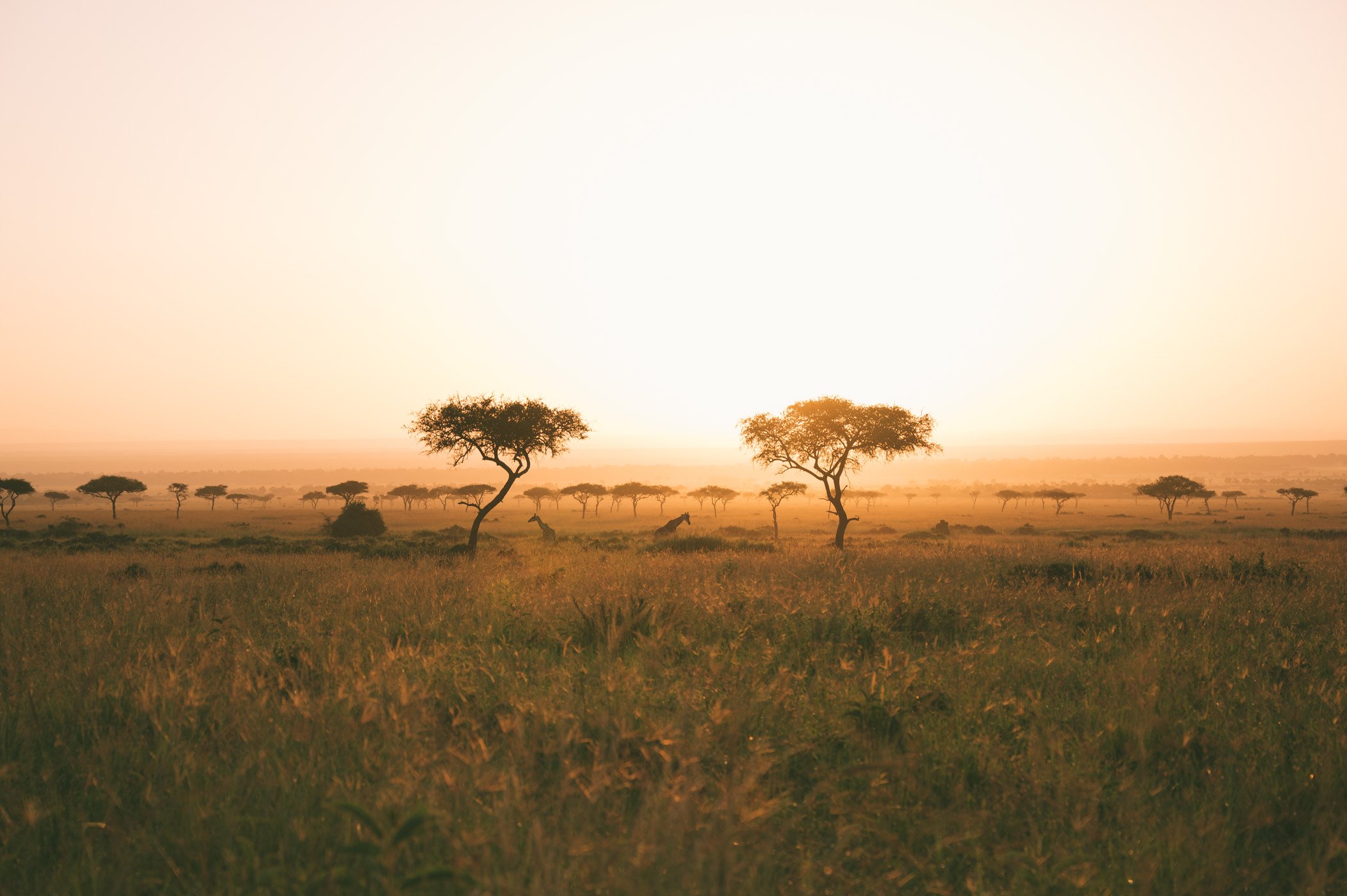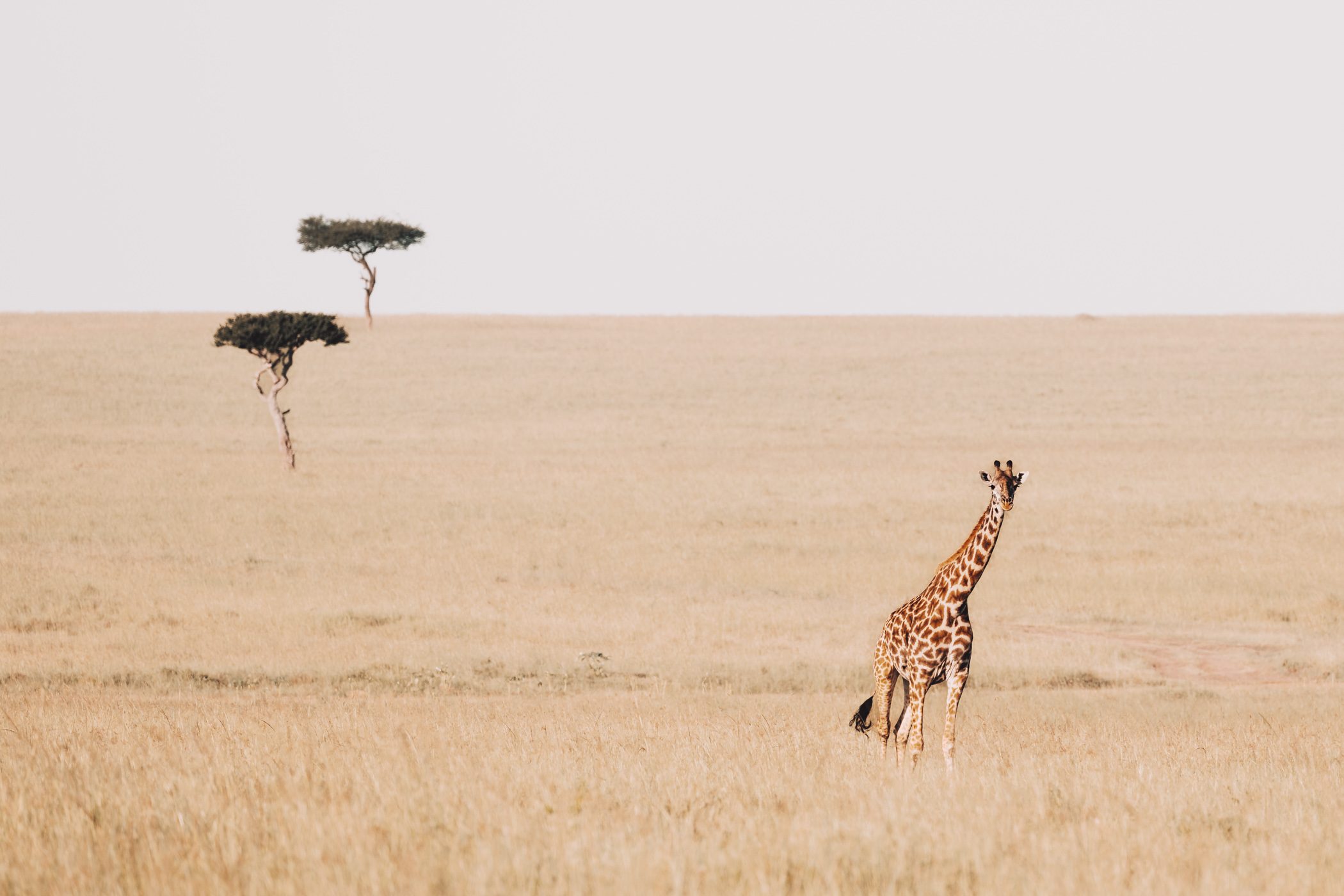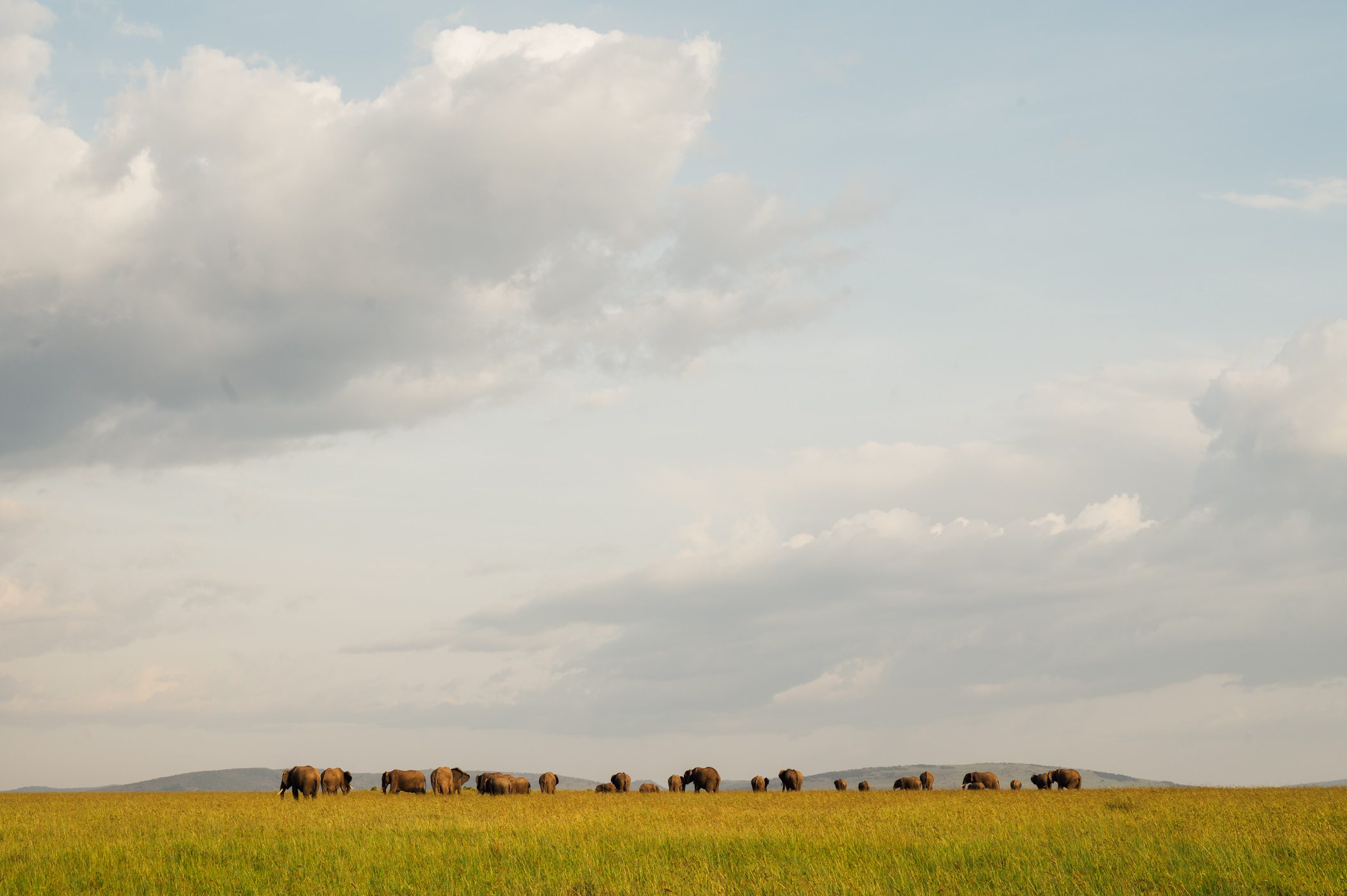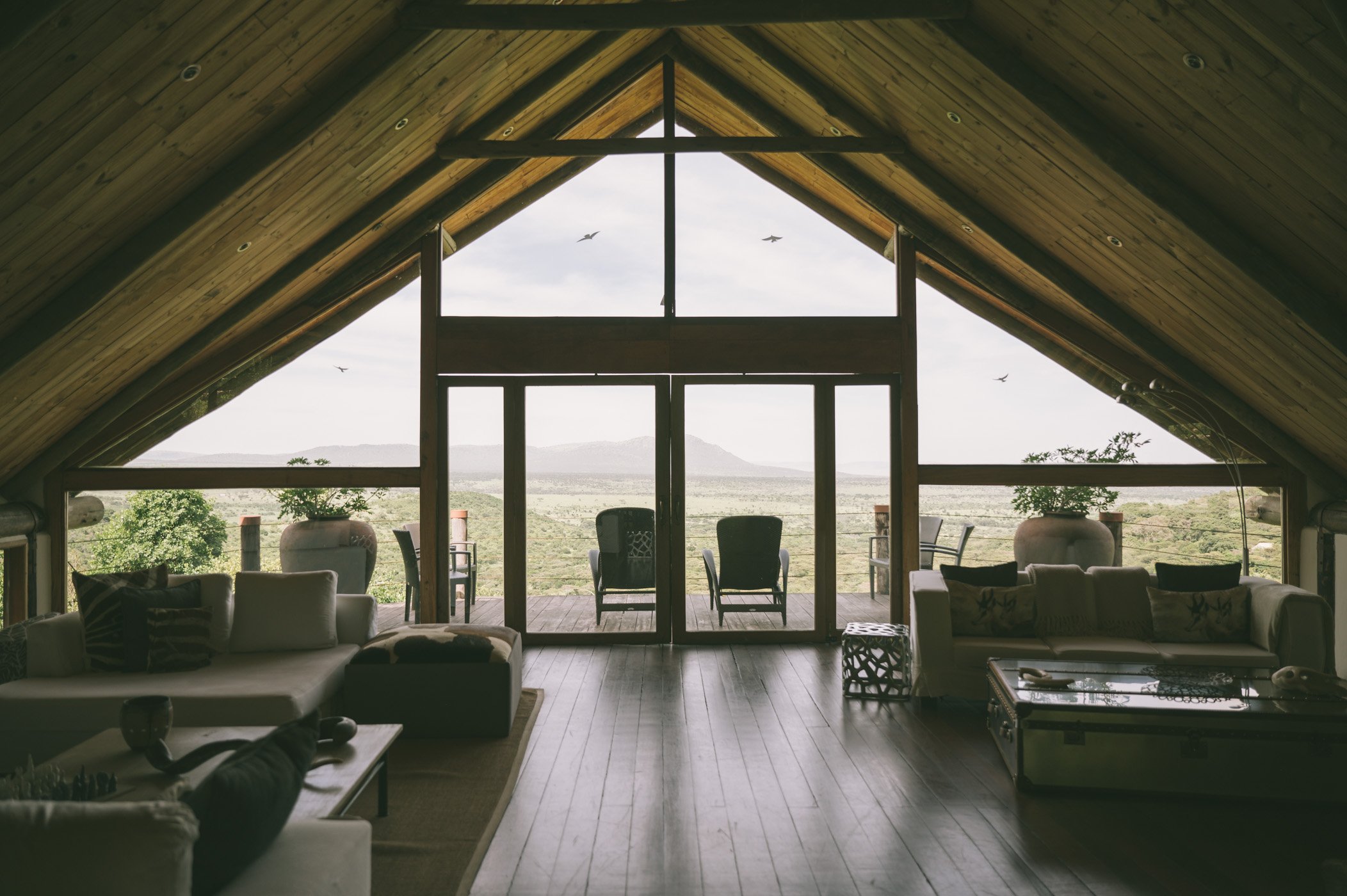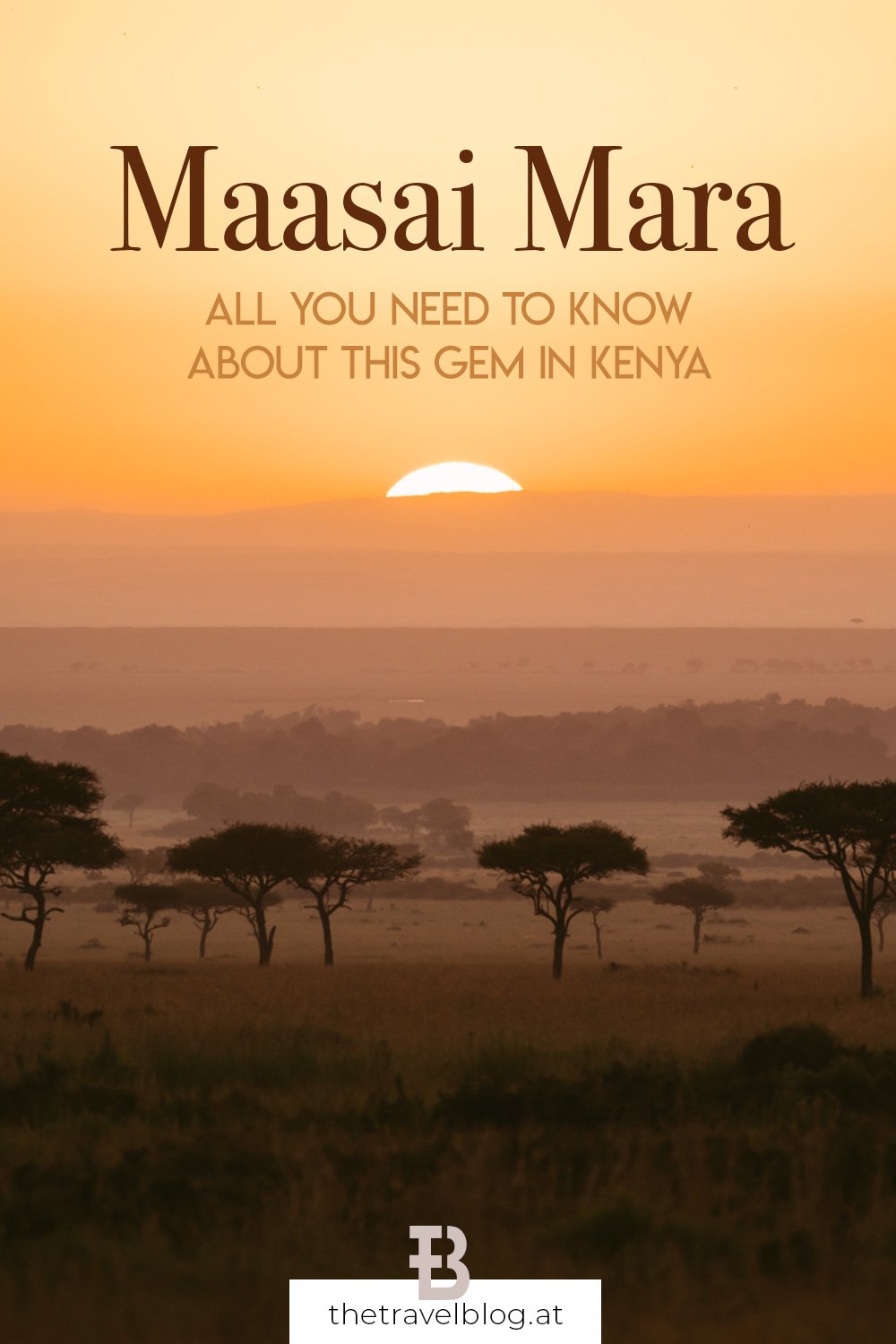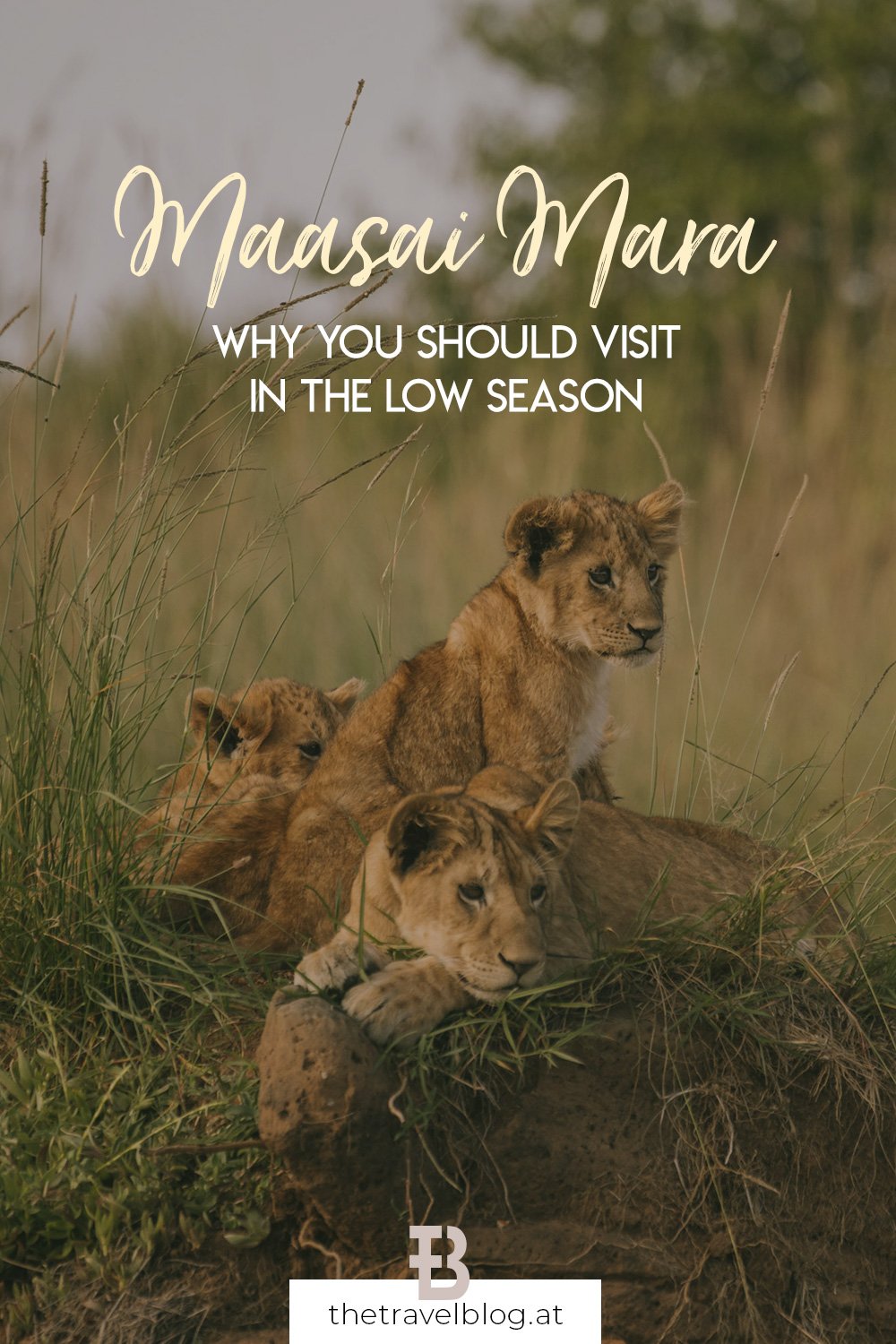(Latest Update: November 2024). The Maasai Mara is one of the key safari destinations within Kenya. This is where most safari guests come to and rightfully so. Especially during the great migration the plains of the Maasai Mara are teaming with wildlife. Millions of wildebeest and zebras cross the Mara river to roam the plains after making their way up North from the Serengeti in Tanzania.
But we decided to visit the Mara outside of the great migration period (which usually lasts from July to October). Both our visits were during the low season, once in January and the second time in March. Here’s what we learned during these two extended visits!
Even in the low season the wildlife sightings are exceptional.
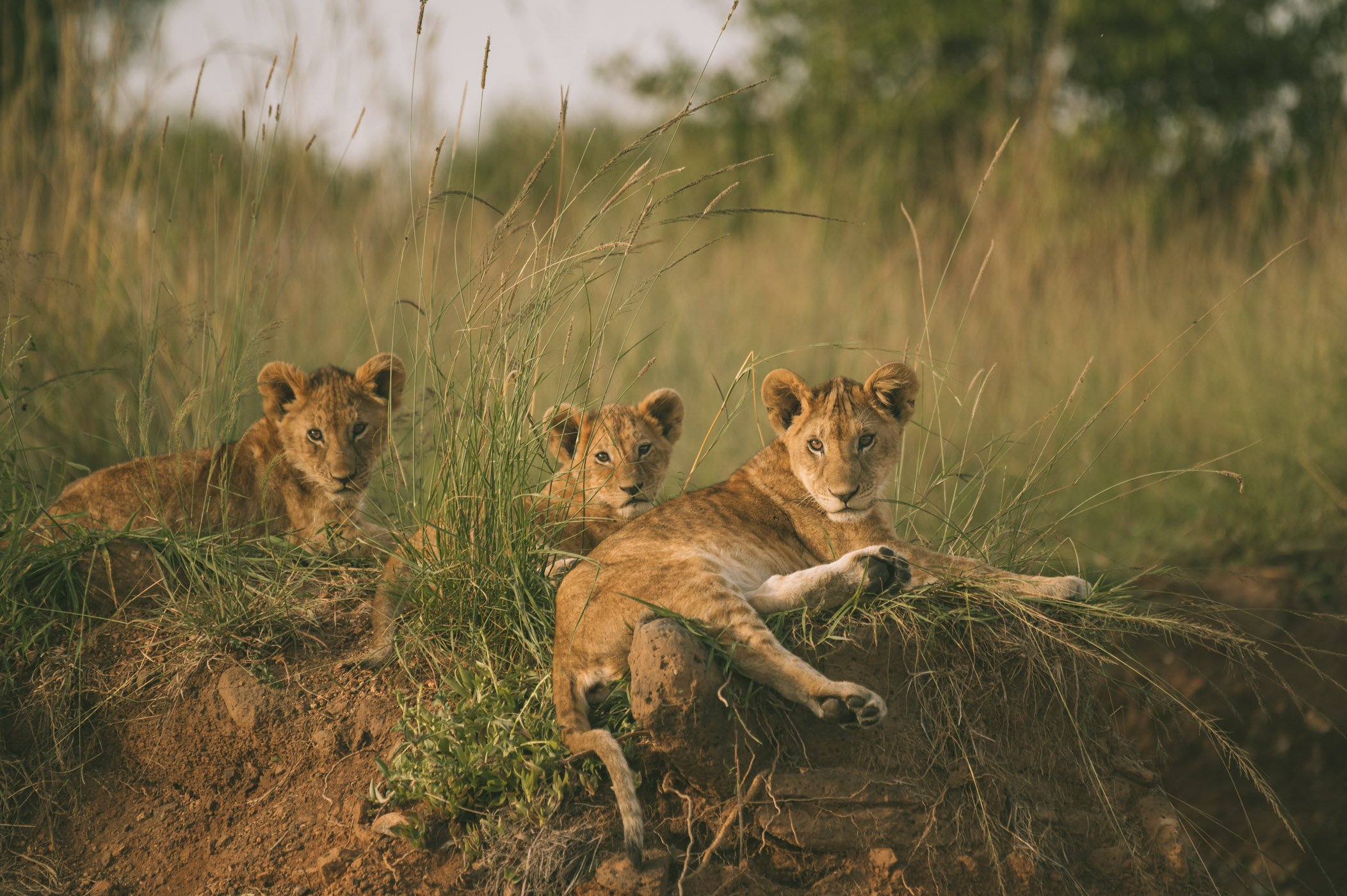 Cubs from the paradise pride – as seen in January – the low season!
Cubs from the paradise pride – as seen in January – the low season!
Where to stay in the Maasai Mara
In total we stayed in 5 different camps in the Maasai Mara so far, always in different areas.
- Northern Mara: Just a few minutes outside of the Maasai Mara National Reserve we stayed at Tangulia Mara Camp in the North – close to Musiara Gate and the Mara North Conservancy.
- Mara Triangle: Our stay at andBeyond Bateleur Camp offered access to the private concession of andBeyond and the famous Mara Triangle.
- Central Maasai Mara: At Emboo River Camp we enjoyed an eco luxury safari in the middle of the Maasai Mara National Reserve.
- Eastern Mara: Close to the Naboisho conservancy and Simba gate lies the brand-new Olimba Mara Camp – with direct access to the Eastern parts of the Maasai Mara.
- South-Eastern Mara: In the very South East we stayed at Cottar’s 1920s camp – which is a bit further outside of the National Reserve – but inside their own private conservancy called Olderkesi Community Conservancy.
If you’re looking to visit the Maasai Mara during the Greater Migration we would recommend to choose a camp along the Mara or Talek river or at one of the mobile camps, that moves with the migration – so you can stay close to the action.
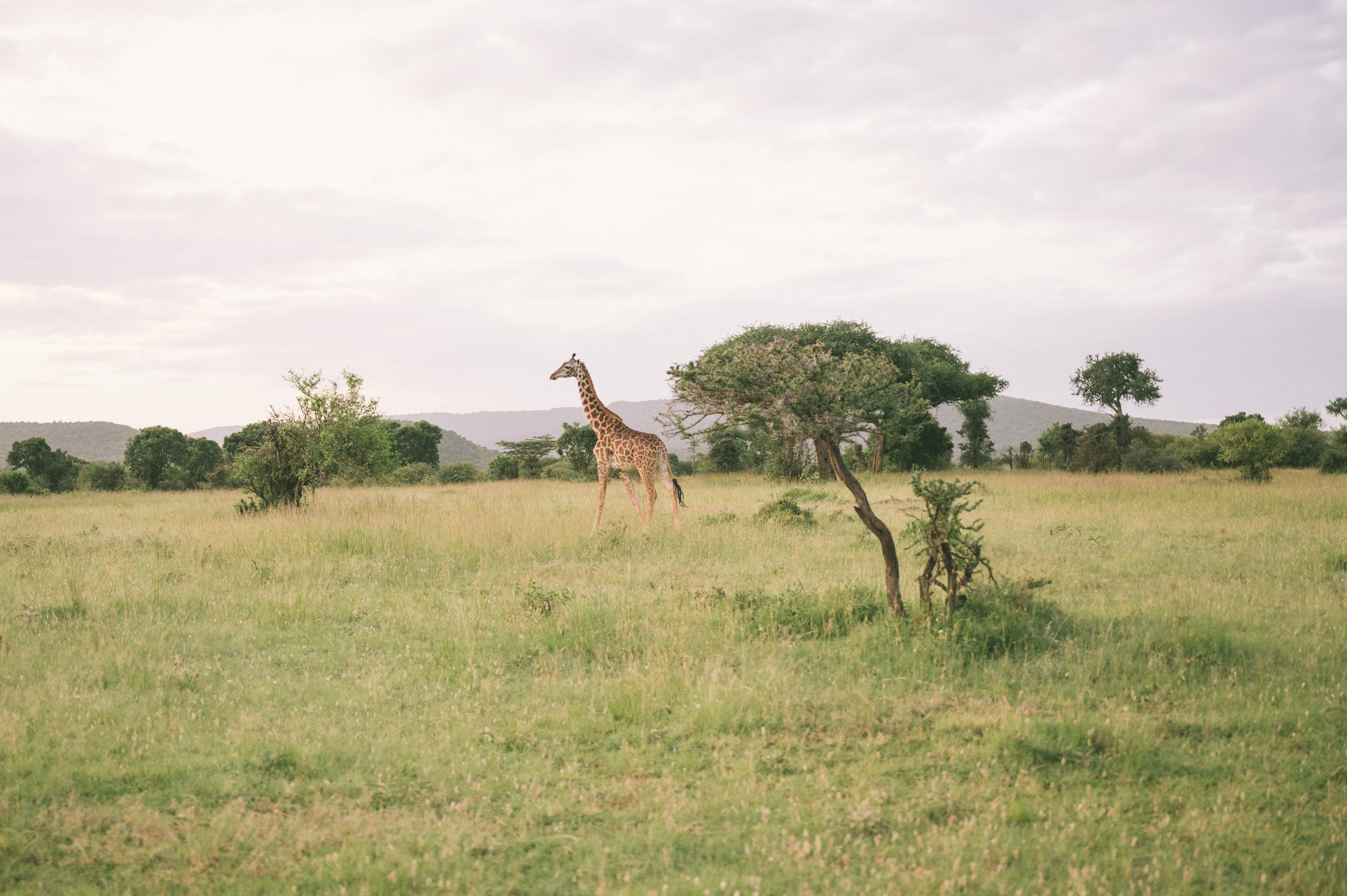 The Maasai Mara is vast and offers different experiences and areas to stay in!
The Maasai Mara is vast and offers different experiences and areas to stay in!
1. Northern Mara
There are a couple of camps located in the Northern part of the Maasai Mara. From here you can access many parts of the vast National Reserve. Camps like “Tangulia Mara” also offer guests game drives to the Mara North Conservancy, that has some of the lowest tourist and vehicle densities. But from the same camp you can also take game drives to the Maasai Mara National Reserve – even all the way to the South to the border of Tanzania (if you take your breakfast out in the bush).
From the North you have access to wide savannahs as well as more dense bush and forest areas, where you have the highest chance for leopard sightings.
Read more about our stay at Tangulia Mara in the Northern Mara here!
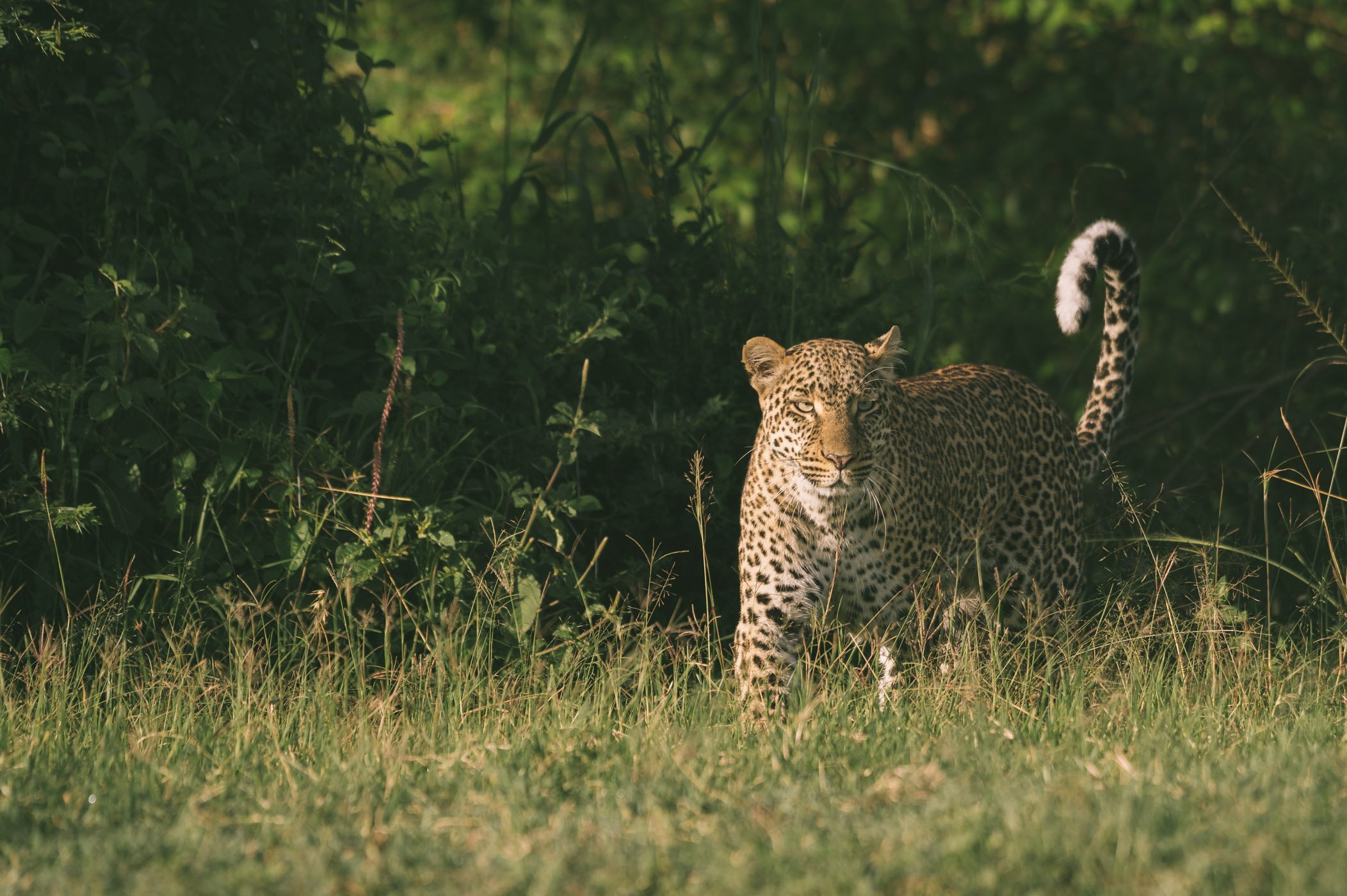 Kaboso – also called the queen of the leopards – can be seen in the Northern parts of the Mara.
Kaboso – also called the queen of the leopards – can be seen in the Northern parts of the Mara.
2. The Mara Triangle
There area a few specialties of the Mara Triangle. One of course is that it sits right at the Great Rift Valley with it’s 400 meter high Oloololo Escarpment. The mountain range closes the triangle on the West and the Mara river is the natural border to the East. Here you can find the Big Five, but surrounded by much less visitors and crowds than in the heart of the Maasai Mara National Reserve.
There are only two or three camps inside the Mara Triangle and a handful at the periphery that are allowed to bring their guests inside – andBeyond being one of those selected few.
Read more about our stay at andBeyond Bateleur camp in the Mara Triangle here!
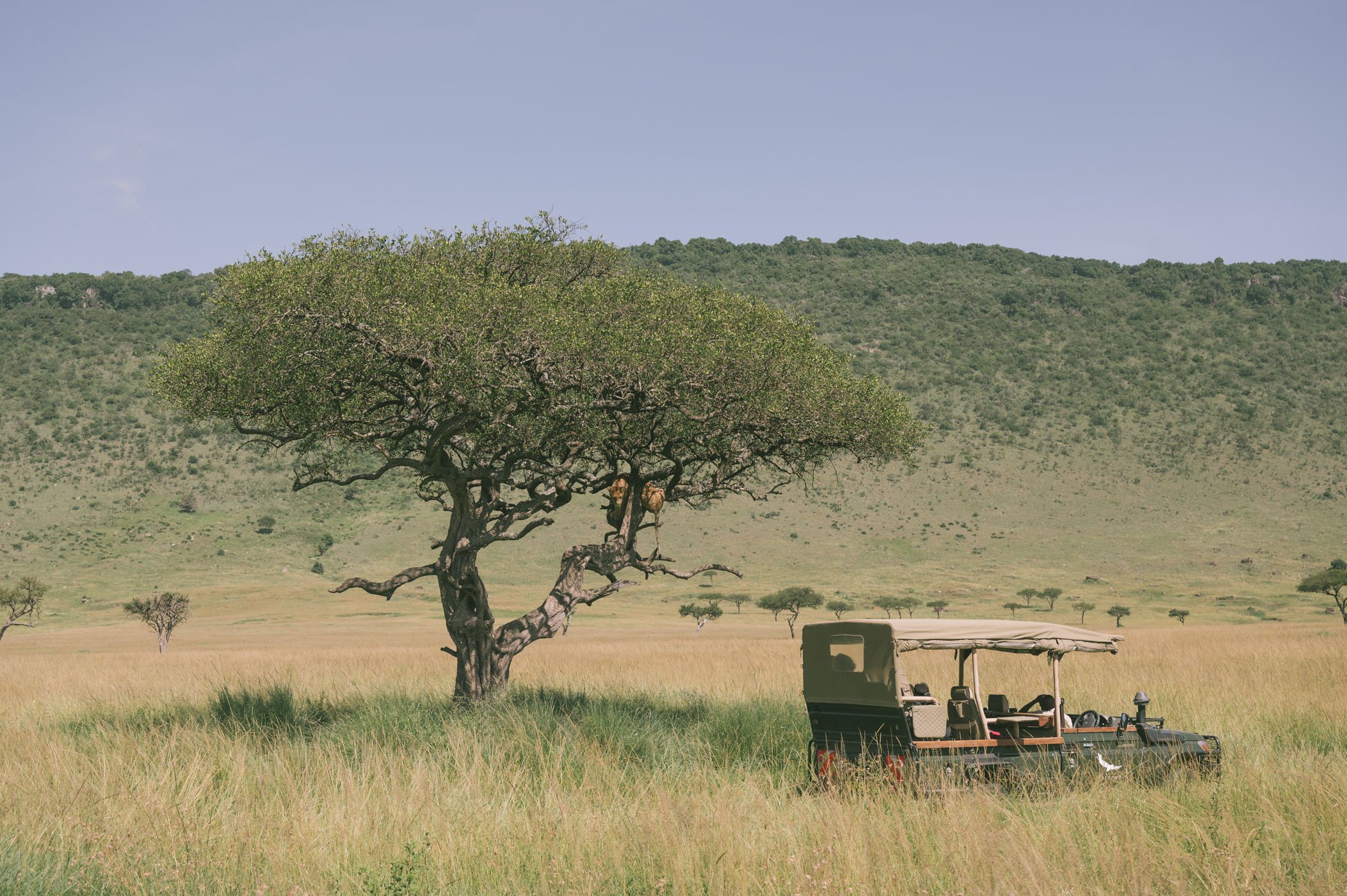 The Mara Triangle is less frequented than the National Reserve – and there’s tree-climbing lions here!
The Mara Triangle is less frequented than the National Reserve – and there’s tree-climbing lions here!
3. Central Maasai Mara
At Emboo River Camp we enjoyed an eco luxury safari in the middle of the Maasai Mara. From here you have access to the famous Topi pride with its 7 female lionesses (when we visited they had 14 cubs!). The central location allows for vast drives accessing leopard territories alongside the Mara river as well as the wide plains where you can spot giraffes from a distance.
This is one of the more popular areas within the Maasai Mara, so it can get busy during the main season. But the wildlife is plentiful here!
Read more about our stay at Emboo River Camp here!
4. Eastern Mara
If you’re looking for a camp, that is focused on socially conscious safaris, Olimba Mara camp should be your first choice. Co-owned by Maasai entrepreneur and activist Amos Kipeen and Julie & Barbara Lovens from Switzerland, this camp focuses on real collaboration and social impact for the communities. The location right at Talek river couldn’t be more scenic and with Simba gate not too far away you have direct access to the Eastern plains of the Mara.
This part of the Mara offers plentiful of plains game while also allowing glimpses into life of the Maasai people who live in and around Talek. The location outside of the reserve might mean longer drives, but also saves some money for those of you conscious of how much to spend on a safari.
Read more about our stay at Olimba Mara Camp here!
5. South-Eastern Mara
In the South the Maasai Mara borders the Serengeti and neighbouring country Tanzania. As a visitor you can combine your travels and also cross the land border between Kenya and Tanzania, but there’s another good reason why you should visit the South. To the Southeast the Maasai Mara borders group ranches and pastoral communities, but there is no fence between these areas. Therefore these ecosystems are critically important for wildlife. Slowly they are transformed into wildlife conservancies, that belong to the local communities. This way you’re supporting wildlife conservation and the communities that live in these areas, while also steering clear of the overcrowded parts of the main National reserve.
Olderkesi Community Conservancy is a critical wildlife corridor and it’s exciting to see how wildlife reclaims these former pastoral areas. You’ll be part of the conservation efforts with your stay here.
Read more about our stay at Cottar’s in the South-East Mara here!
The Olderkesi Community Conservancy is in phase 1 of a transformational process from cattle-grazing pastoral land to wildlife conservancy.
The difference between the Maasai Mara and the surrounding conservancies
The conservancies that surround the Maasai Mara act as buffer zones between the National Reserve and the surrounding community farms, where cows graze year-round. While the Maasai Mara National Reserve is the key area during the great migration, there is also plentiful resident wildlife that lives here outside of the main season, and who also roam between the reserve and the adjacent conservancies. Therefore the conservancies offer a similar game viewing experience, but without the crowds in the main reserve.
In addition many of these conservancies belong to Maasai communities and with leasing them to safari companies they can create additional revenue while the land also gets protected. It’s a win win for wildlife and people!
Yet, there’s distinct differences between these parts of the Maasai Mara and we believe it’s important to know about those before booking your trip. The landscapes are beautiful & iconic everywhere – think “Out of Africa” every step of the way. Undulating plains dotted with single acacia trees, fiery red sunsets, golden grass swaying in the wind – it’s all there!
But of course the wildlife is not the same in all the areas. We had most of our big cat encounters within the Mara Triangle (tree-climbing lions) and the Maasai Mara National Reserve (leopard and cheetahs), but that also comes down to luck. The wildlife density heavily varies between the conservancies too.
There are resident leopards in the Olderkesi community conservancy for example, we just didn’t get lucky to see them 😉 Chances are that the success of game drives will increase with the further development of these community conservancies over the course of time.
The huge advantage of the conservancies is the privacy! While the Maasai Mara is open for all the camp guests, but also for day visitors, that stay outside the reserve, the conservancies are exclusively open to guests, that stay at one of the camps or lodges within the conservancy. This is key for a more relaxed and private safari. Another advantage is that off road driving is allowed within the conservancies, but not inside the Maasai Mara National Reserve. This way you’ll be able to get closer wildlife encounters in the conservancies.
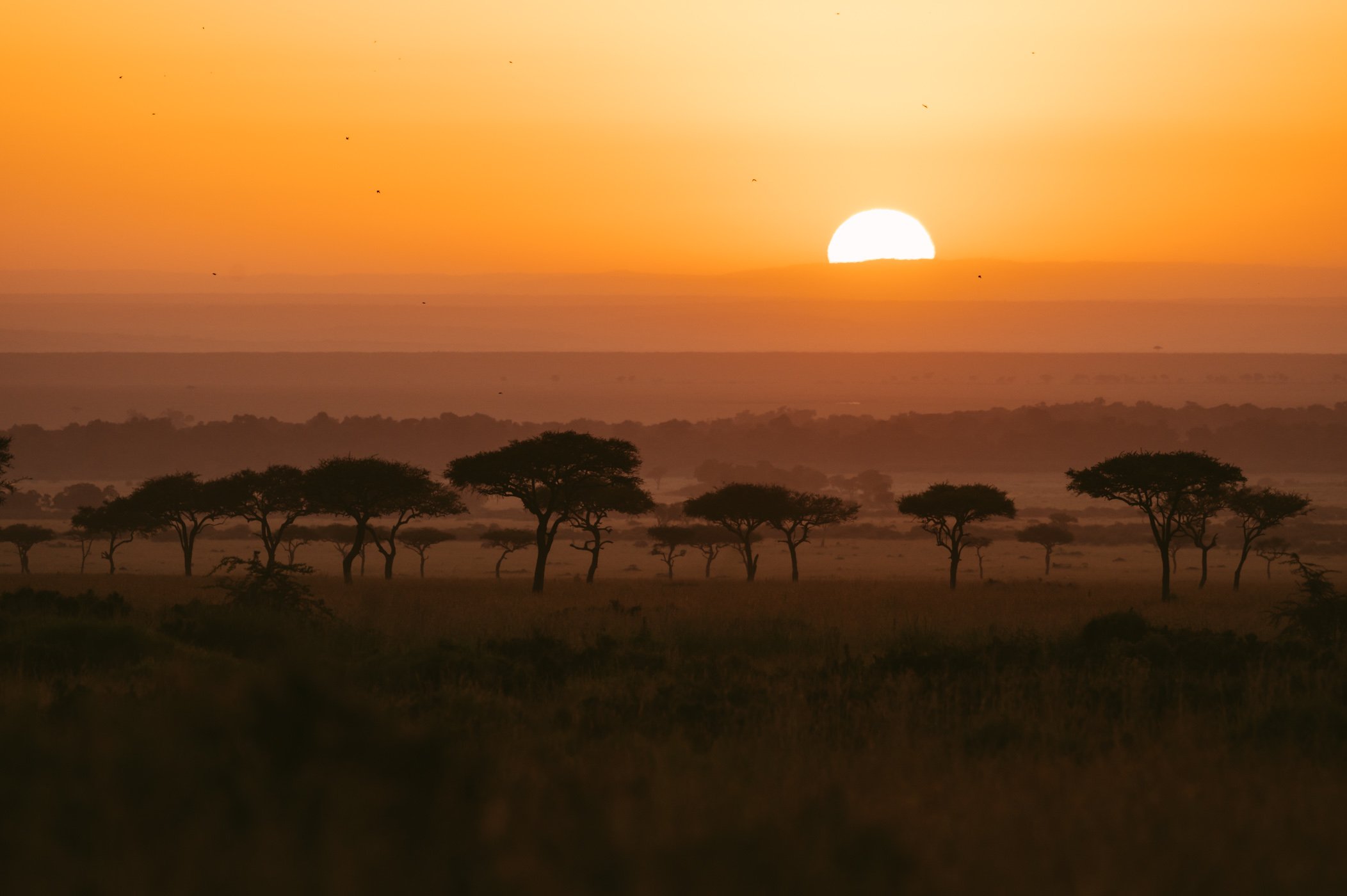 Sunrise in the Maasai Mara is always a spectacle.
Sunrise in the Maasai Mara is always a spectacle.
When to visit the Maasai Mara
Peak season for the Maasai Mara is July to October during the great migration, but expect the reserve to get busy too.
Great migration: Is it the best time to visit the Maasai Mara?
Unless you really want to experience those infamous river crossings we would recommend to choose the low season. In fact many guides tell us that there’s always visitors who aren’t really prepared for the bloody and ruthless spectacle that those river crossings are. During the great migration it’s a feast for the predators and one must get accustomed to seeing animals fight for their lives (and loose) on a daily basis. The plains of the Maasai Mara get dotted with carcasses during this period and a smell of decay fills the air. It’s wild and untamed, but maybe not for everyone (don’t get us wrong, we’re still eager to experience this madness one day).
We believe it’s best to choose the season that fits your needs & wishes! For us the low season was perfect, as we enjoyed a bit more privacy. But of course we are enticed to re-visit during the great migration again… 🙂
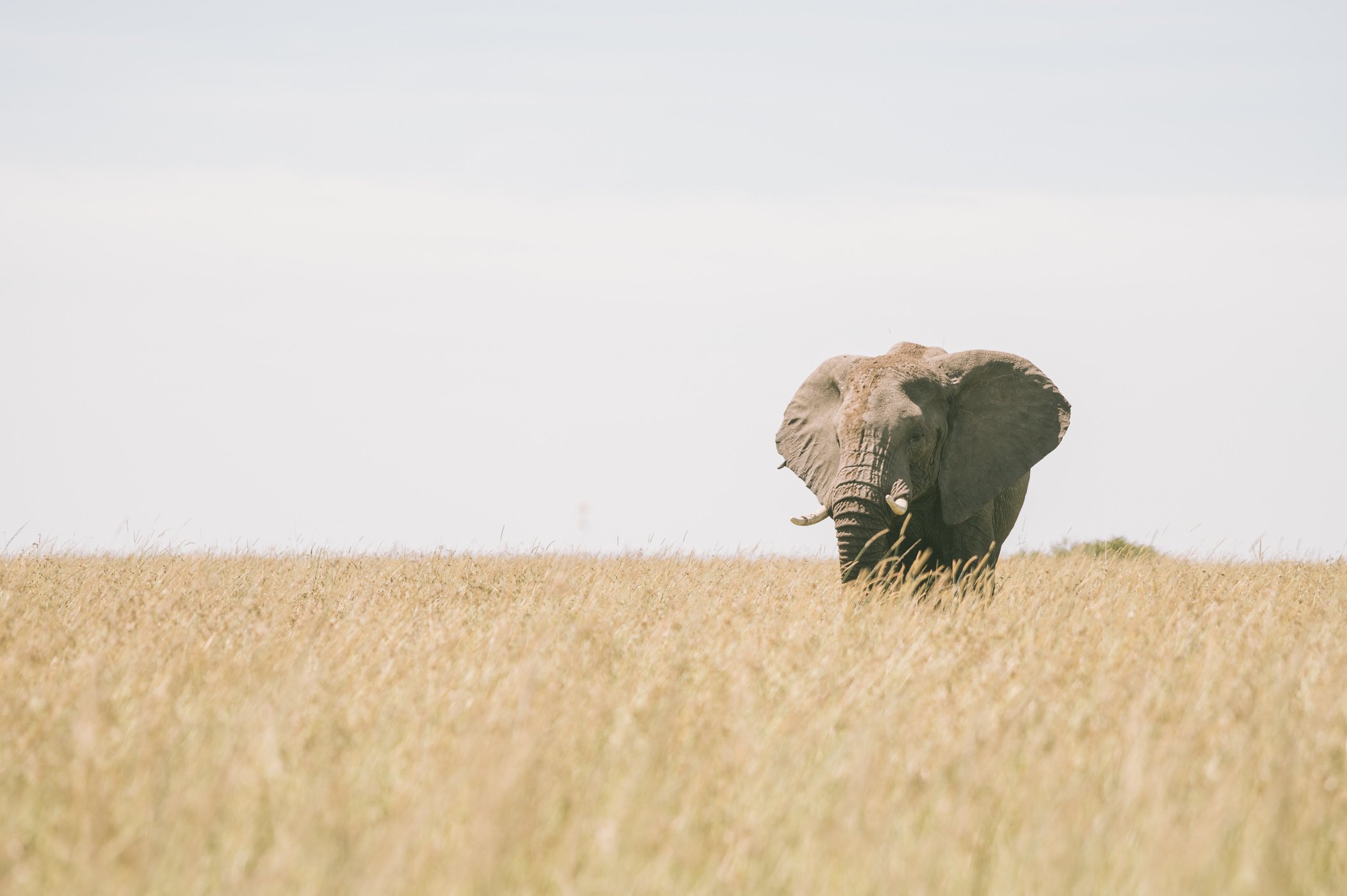 This kind of grass is common in January in the Maasai Mara.
This kind of grass is common in January in the Maasai Mara.
After the great migration the Mara will change and look more like a golf court.
The low season in the Maasai Mara
We visited the Maasai Mara in January during our first visit and in March during our second, which are some of the warmest months of the year with temperatures reaching about 26-28 degrees Celsius during the day. At night it still gets quite cold (10-15 degrees Celsius), so a soft-shell jacket and a cashmere hoodie is recommended for morning and afternoon drives.
After the migration ends in November the Maasai Mara our guides tell us that the plains looks like a massive golf course, because the grass has been completely mowed by the wildebeest and zebras. That is also the start of the short rainy season in November and December. This is when the grass grows back and becomes long again.
From January to Mid March it’s usually dry again, before the real rainy season starts (with its peak in April and May), which is not the best time for a visit. When it’s very rainy the roads in the Mara become muddy ponds, vehicles get stuck frequently and some rivers cannot be crossed anymore.
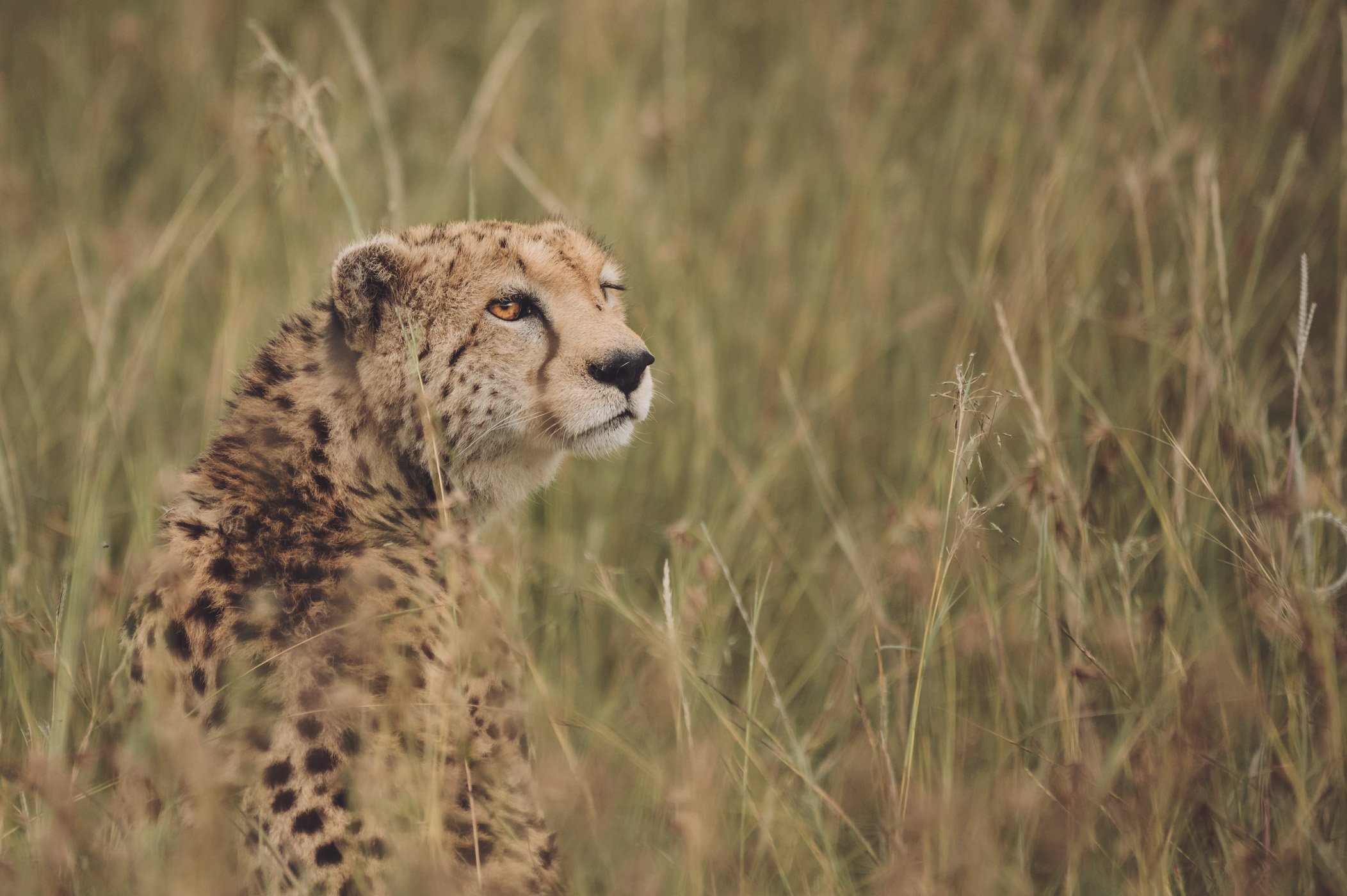 The longer grass in January makes cat sightings a bit more challenging, but not impossible.
The longer grass in January makes cat sightings a bit more challenging, but not impossible.
How to get to the Maasai Mara
We always travelled to the Maasai Mara by bush plane. There’s plenty of flights connecting the Mara from Wilson Airport in Nairobi. The first time we landed at the Mara Musiara airstrip – which is located in the Northern Mara. From there we drove to our camp Tangulia Mara and then also to our next camp andBeyond Bateleur Camp. For our second visit we flew with SafariLink to the Ol Kombo airstrip, that serves the more centrally located camps and lodges inside the Maasai Mara.
Of course there’s the option to also drive to the Maasai Mara from Nairobi and most (more affordable) group trips will only offer this option (with a driver and a guide).
Bush planes are rather expensive, but of course more comfortable and safe you some time and nerves. Especially since driving in Kenya can be a bit of an adventure. The main tarmac roads might be in good condition, but the traffic we experienced on the road connecting Tsavo with Mombasa was quite horrible – with truck drivers overtaking, having no lights on and ultimately pushing you off the street if necessary.
So our option of choice will always be bush planes wherever possible.
If you switch camps inside the Mara (or in the adjacent conservancies) you can of course go by car. These drives between camps in the Maasai Mara are usually just like game drives and done in open safari vehicles. During our first visit we drove all the way from andBeyond Bateleur camp in the North to the South-East via Talek Gate. This is where we switched vehicles from andBeyond to Cottar’s vehicles and then went on – well and also encountered the famous coalition of five male cheetahs (which have sadly lost some members by now), but that’s another story.
Our Camps in the Maasai Mara
Tangulia Mara
- Northern Mara
- The first Maasai-owned camp in the Maasai Mara!
- Starting at 730 US$ per person & night
andbeyond Bateleur Camp
- Private Concession in the Maasai Mara & access to the Mara Triangle
- Luxurious tented camp with private butler service
- Starting at 725 US$ per person & night
Cottar’s 1920s Safari Camp
- South-East Mara, Olderkesi Community Conservancy
- Retro vibes camp run by the longest standing safari family in Africa
- Starting at 963 US$ per person + 116 US$ Conservancy Fee
- Central Maasai Mara
- Eco Luxury Camp – 100% carbon neutral and full electrical safari vehicle fleet
- Starting at 360 USD per person and night
- East of the Maasai Mara, close to Talek gate
- Socially responsible camp for budget travellers with focus on photography, families
- Starting at 300-400 USD per person and night

